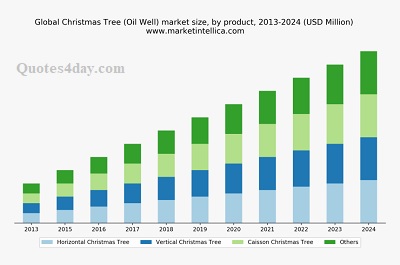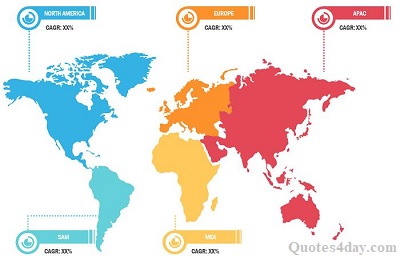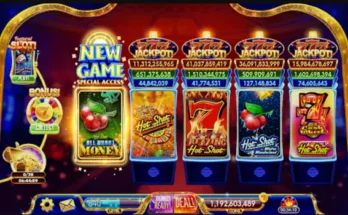Bubble tea, also known as pearl milk tea or boba tea, is a popular beverage that originated in Taiwan in the 1980s. It has gained significant popularity worldwide due to its unique combination of tea, milk, and chewy tapioca balls. The bubble tea market has experienced substantial growth in recent years, driven by the increasing demand for refreshing and innovative beverages. This article will provide a comprehensive analysis of the bubble tea market, including its size, share, growth, trends, segmentation, and regional demand forecast by 2030.

Executive Summary
The bubble tea market is witnessing significant growth globally, driven by factors such as the increasing consumer demand for unique and refreshing beverages, the rise of health-conscious consumers, and the continuous innovation in flavors and product offerings. The market is expected to continue expanding in the coming years, with Asia Pacific dominating the regional demand. This article provides an in-depth analysis of the bubble tea market, highlighting its size, share, growth, trends, segmentation, and regional demand forecast by 2030.
Overview of Bubble Tea
Bubble tea is a beverage that originated in Taiwan and has gained worldwide popularity. It typically consists of a base tea, milk, sweeteners, and chewy tapioca balls or other toppings. The unique combination of flavors and textures sets bubble tea apart from other beverages. It is often served cold and can be customized according to individual preferences, allowing consumers to choose the type of tea, flavor, sweetness level, and toppings.
Market Size Analysis
Global Bubble Tea Market Size
The global bubble tea market has experienced substantial growth in recent years. According to industry reports, the market was valued at USD 2.4 billion in 2020 and is projected to reach USD 4.3 billion by 2030, with a compound annual growth rate (CAGR) of 6.8% during the forecast period. The increasing popularity of bubble tea among millennials and Gen Z consumers, coupled with the expansion of bubble tea chains in various countries, is driving market growth.
Regional Bubble Tea Market Size
The bubble tea market’s growth is not limited to the global level but also varies across different regions. Asia Pacific is currently the largest market for bubble tea, accounting for the majority of the global market share. The region’s strong cultural association with tea, coupled with the presence of key bubble tea-consuming countries like Taiwan, China, and Japan, contributes to its dominance. North America and Europe are also significant markets, experiencing steady growth due to the increasing popularity of bubble tea among young consumers.
Market Share Analysis
Key Players in the Bubble Tea Market
The bubble tea market is highly competitive, with several key players dominating the industry. These include:
- Chatime
- Kung Fu Tea
- Gong Cha
- Sharetea
CoCo Fresh Tea & Juice
These companies have established a strong presence globally and offer a wide range of bubble tea flavors and options to cater to diverse consumer preferences.
Market Share by Product Type
Bubble tea is available in various product types, including:
- Traditional bubble tea
- Fruit-flavored bubble tea
- Milk-based bubble tea
- Yogurt-based bubble tea
Among these, traditional bubble tea holds the largest market share, followed by fruit-flavored variants. However, milk-based and yogurt-based bubble teas are gaining popularity among health-conscious consumers, driving their market share.
Growth Trends in the Bubble Tea Market
Rising Popularity of Bubble Tea
Bubble tea has witnessed a surge in popularity worldwide, particularly among younger consumers. Its unique blend of flavors, customizable options, and Instagram-worthy appearance have contributed to its growing fan base. Social media platforms and influencers have played a significant role in promoting bubble tea, making it a trendy and sought-after beverage.
Health and Wellness Trends
In recent years, consumers’ focus on health and wellness has influenced the bubble tea market. To cater to health-conscious individuals, many bubble tea brands now offer sugar-free or low-sugar options and use natural ingredients. Additionally, the inclusion of fruit teas and herbal infusions has further expanded the market by appealing to those looking for healthier alternatives.
Innovation and Product Diversification
To stay competitive, bubble tea brands continuously innovate and diversify their product offerings. They introduce new flavors, experiment with different toppings and textures, and even create seasonal or limited-edition varieties. This innovation-driven approach helps attract and retain customers, contributing to the market’s growth.

Market Segmentation
By Type of Tea
The bubble tea market can be segmented based on the type of tea used as the base. Some common types of tea used in bubble tea include:
- Black tea
- Green tea
- Oolong tea
- Herbal tea
Each type of tea imparts a distinct flavor and aroma to the beverage, offering consumers a wide range of choices.
By Flavor
Bubble tea comes in various flavors, catering to different taste preferences. Some popular flavors include:
- Classic milk tea
- Taro
- Matcha
- Mango
- Strawberry
- Watermelon
- Coconut
- Lavender
The availability of diverse flavors enables consumers to explore and find their favorite bubble tea combinations.
By Distribution Channel
Bubble tea is primarily sold through the following distribution channels:
- Bubble tea shops/stores
- Cafes and coffee shops
- Online platforms
- Supermarkets and convenience stores
The choice of distribution channel may vary depending on the region and consumer convenience.
Regional Demand Forecast
North America
North America is a growing market for bubble tea, driven by the increasing popularity of Asian cuisine and the influence of Asian-American communities. The region is witnessing a rise in bubble tea shops and cafes, catering to a diverse consumer base. The demand for bubble tea is expected to continue growing steadily in North America.
Europe
Europe is another emerging market for bubble tea. The beverage’s unique flavors and cultural appeal have attracted European consumers, especially in urban areas. As awareness and availability of bubble tea increase, the market is likely to experience significant growth in the coming years.
Asia Pacific
Asia Pacific is currently the largest market for bubble tea, with countries like Taiwan, China, and Japan leading the consumption. Bubble tea is deeply ingrained in the region’s culture, and its popularity continues to grow. The Asia Pacific market is projected to witness substantial growth, driven by increasing disposable incomes, changing lifestyles, and a growing preference for innovative beverages.
Latin America
The bubble tea market in Latin America is gradually gaining momentum. Countries like Brazil and Mexico have seen the emergence of bubble tea shops, attracting a young consumer demographic. As the awareness and availability of bubble tea expand in the region, the market is expected to witness steady growth.
Middle East and Africa
The Middle East and Africa region also show potential for the growth of the bubble tea market. Urbanization, changing consumer preferences, and the influence of global food and beverage trends have contributed to the increasing demand for bubble tea in this region.
Conclusion
The bubble tea market is experiencing significant growth globally, driven by the increasing consumer demand for unique and refreshing beverages. The market size is expected to reach USD 4.3 billion by 2030, with Asia Pacific dominating the regional demand. Rising popularity, health and wellness trends, and continuous innovation are driving factors for the market’s growth. The market segmentation based on tea type, flavor, and distribution channel provides consumers with a wide range of options. As the bubble tea market continues to expand, it presents opportunities for both existing and new players to thrive in this dynamic industry.
You can also get an Instant international SEPA transfer from WestStein
FAQs
1. Is bubble tea healthy?
Bubble tea can be enjoyed as an occasional treat, but it’s important to be mindful of the sugar content and choose healthier options such as sugar-free or low-sugar varieties.
2. Are there any vegan options for bubble tea?
Yes, many bubble tea shops offer vegan options, including plant-based milk alternatives and toppings made from tapioca starch or fruits.
3. Can bubble tea be customized?
Absolutely! Bubble tea is highly customizable, allowing you to choose the type of tea, flavor, sweetness level, and toppings according to your preferences.
4. Can I make bubble tea at home?
Yes, it is possible to make bubble tea at home. There are numerous recipes and bubble tea kits available online to help you create your favorite flavors.
5. Where can I find bubble tea near me?
You can find bubble tea shops or cafes near you by using online directories, food delivery apps, or searching on popular search engines.


